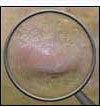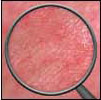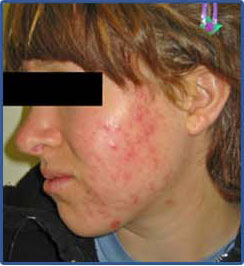Menu
We know that acne can be an emotional, frustrating and troubling condition. Our patients often come to our Los Angeles or Orange County clinics for laser acne treatment after failing treatment programs with over-the-counter products and prescription medications such as antibiotics and accutane.
Unfortunately, there is no cure for acne and what works for one person doesn’t always work for another. But there is hope and the medical community is constantly developing new ways to treat acne. Although laser acne treatment is one of the newer methods, it is also one of the most promising. In our practice (where we survey all patients) we have found that 80% of them are happy with their results from our acne treatment Los Angeles and Orange County clinics. Our success rate is one of the highest of the many treatments available.
Traditional acne therapies, including oral and topical drugs, can have mixed results. Accutane for acne may have harmful side effects or you may become resistant to antibiotics. In contrast, Celibre’s laser acne treatment uses laser technology and photodynamic therapy (PDT) to safely and effectively treat mild to moderate and inflammatory acne as well as cystic/nodular acne without the side effects of or resistance to medications.
Acne Vulgaris (moderate)
Acne Vulgaris (Severe)
Pyoderma Faciale (Rosacea Fulminans)
Acne is caused when a healthy hair follicle becomes blocked by skin and hair cells. That have not shed properly and have stuck together in the shaft of the hair follicle. When this happens, the oil produced by the sebaceous gland and P.acnes bacteria are no longer able to exit through the surface of the skin. Inflammation occurs and acne develops.

Increased hormonal activity stimulates the sebaceous gland to produce more oil. The size of the sebaceous gland becomes enlarged because of the increased oil production (similar to our muscles with physical exercise). This allows for more oil production, which in turn, allows for more sebum plugs to develop. When the size of the sebaceous gland increases following hormonal changes, it allows for easier targeting (and shrinkage) with lasers.
Acne Vulgaris (moderate) – This is the most common form of acne. Acne vulgaris lesions include whiteheads, blackheads, papules, and pustules.

Whiteheads: Whiteheads occur as a result of a pore that has become completely blocked. Sebum (oil), bacteria, and dead skin cells become trapped, causing a white colored bump on the surface. Whiteheads normally dissapear relatively quickly, having a life span of only a few days (unlike blackheads, which can persist for a long time).
Blackheads: Blackheads occur when a pore gets only partially blocked. The partially open pore allows some of the trapped sebum (oil), bacteria, and dead skin cells to escape the pore and out towards the surface. The dark coloration is caused by melanin (a naturally occuring pigment) reacting with oxygen.
Papules: Papules are inflamed, red colored, tender bumps (lesions) on the skin surface that have no visible head. They most often occur as a result of a break in the follicle wall, which allows cellular debris as well as bacteria to spill into the dermis. A papule often progresses to a pustule. Important: Do not squeeze a papule as it will worsen the breakout.
Pustules: A pustule is a regular pimple that has become inflamed. It appears as a redish circle with a light colored center or head (typically white or yellow). This light color is produced by pus, sebaceous matter and cellular debris. Pustules range in size, from small to fairly large.
Acne Vulgaris (Severe) – Severe acne vulgaris is characterized by nodules and cysts.

Nodules: As opposed to above mentioned, “moderate” cases of acne, nodular acne involves the presence of acne spots which are significantly larger, possibly painful, and very long lasting (couple of months). Nodules are large, hard bumps and they exist under the surface of the skin. They develop when the follicle wall ruptures, deep within the dermis. Contaminated debris from the follicle empties into the dermis and infects adjoining follicles. With this type of acne, scarring is common. Further, if not completely healed, nodules can leave behind an impaction which can flare repeatedly.
Cysts: An acne cyst can look similar to a nodule, but it is filled with pus and is categorized as being 5mm + in diameter. Cysts are usually painful. And, like with nodules, scarring is a common occurrence. Development begins from a deep rupture of the follicle wall. Once this occurs, a membrane forms, surrounding the infection in the dermis. As the cyst moves towards the surface, it damages healthy skin tissue along the way, destroying the follicle.
Acne Rosacea – Acne Rosacea can appear similar to acne vulgaris. So much so, that the two types of acne are often mistaken for one another.

Rosacea – Rosacea is currently affecting millions of people, mostly individuals over the age of 30. It appears as a red colored rash and is typiaclly confined to the nose, cheeks, chin, and forehead. The redness is usually accompanied by pimples, bumps, and blemishes. On some occasions, blood vessels in the face become more visible. The condition is far more common in women, but is often more severe among male sufferers. If left untreated, rosacea can cause swelling of the nose as well as growth of excess tissue (a condition called rhinophyma)
 Acne conglobata – Acne conglobata is a highly inflammatory form of cystic acne. It is identified by very deep. Inflammatory nodules that connect under the skin to other nodules. It is difficult treat and causes severe scarring. In acne conglobata, numerous large lesions (which often are interconnected) are present on the surface of the skin. These lesions, which are often painful, are most commonly found on the face, chest, upper arms, back, buttocks, and thighs. As with other, long lasting forms of acne, this condition can unfortunately persist for many years
Acne conglobata – Acne conglobata is a highly inflammatory form of cystic acne. It is identified by very deep. Inflammatory nodules that connect under the skin to other nodules. It is difficult treat and causes severe scarring. In acne conglobata, numerous large lesions (which often are interconnected) are present on the surface of the skin. These lesions, which are often painful, are most commonly found on the face, chest, upper arms, back, buttocks, and thighs. As with other, long lasting forms of acne, this condition can unfortunately persist for many years

Acne Fulminans – Acne fulminans is a sudden onset of acne conglobata that most typically occurs to young men. Severe nodulocystic, often ulcerating acne lesions are visible which as with the impervious form of acne, leaves severe scarring. However, with acne fulminans, an onset of fever, as well as a general aching of joints occurs in conjunction with the outbreak. This form of acne is also known for its resistance of antibiotics.

Gram-Negative Folliculitis – Gram-Negative Folliculitis is an infection (bacterial in nature) that is characterized by cysts and pustules. This can happen as a complication of an extended series of antibiotic treatment of acne vulgaris. This condition is very uncommon, and gender proclivities are still unknown. However, the good news is that this form of acne is typically responsive to treatment and much success has been seen in treating this condition.
 Pyoderma Faciale (Rosacea Fulminans) – Pyderma faciale is another form of severe acne, however, it only affects females. Typically, sufferers are between 20 – 40 years of age. Pyoderma Faciale is commonly characterized by sizable and painful nodules, pustules, and sores. All of these tend to leave severe scarring. The condition has a rapid onset, and that can sometimes be frightening because those affected could be individuals with no prior history of acne. The condition persists for a period of one year.
Pyoderma Faciale (Rosacea Fulminans) – Pyderma faciale is another form of severe acne, however, it only affects females. Typically, sufferers are between 20 – 40 years of age. Pyoderma Faciale is commonly characterized by sizable and painful nodules, pustules, and sores. All of these tend to leave severe scarring. The condition has a rapid onset, and that can sometimes be frightening because those affected could be individuals with no prior history of acne. The condition persists for a period of one year.


View more Acne Laser Treatment before and after photos
When you come in for your free consultation, our knowledgeable, professional and courteous medical staff will be available to answer all your acne questions and will help you select the best acne treatment for you. Call now or come to one of our conveniently located medical clinics in Los Angeles or Orange County for a free consultation.
Contact us today to schedule a FREE laser acne treatment consultation! 
Click here for Celibre’s laser acne removal Treatment Plan
